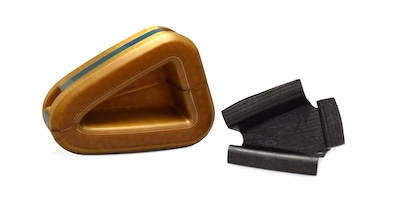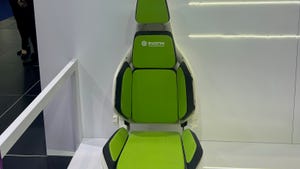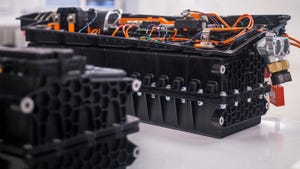Airplane manufacturer Boom Supersonic leverages Stratasys F900 3D printer with Aircraft Interiors Solution to produce hundreds of parts for new supersonic demonstrator aircraft.
November 5, 2019

Stratasys has deepened its partnership with Boom Supersonic – the Colorado-based company building the world’s fastest ever supersonic airliner. In signing a seven-year agreement extension, the companies are further accelerating the adoption of additive manufacturing for 3D-printed flight hardware.
|
3D printing is used to fabricate composite part tooling for lead edge wing ribs. |
Expanding 3D printing beyond rapid prototyping, Boom Supersonic is utilizing the Stratasys F900 3D Printer with the Aircraft Interiors Solution (AIS) package to create hundreds of 3D printed parts for XB-1, the company’s supersonic demonstrator aircraft. The AIS package is aimed at helping improve mechanical properties and enables repeatable development of aircraft production parts.
“By being able to print critical parts and components on-site rather than purchasing them from a supplier, we can create custom parts, increase our speed from engineering to manufacturing, and focus on building the aircraft and fulfilling our vision,” said Mike Jagemann, Head of XB-1 Production at Boom. “During the first three years of our partnership, we 3D printed more than 200 parts for tooling, prototypes and test benches using Stratasys’ F370 and Fortus 450mc 3D printers, and have saved hundreds of hours of work time, enabling rapid iteration of design cycles. Stratasys’ standing as a global leader in 3D printed aerospace applications made them an ideal partner for Boom, and we’re excited to extend this partnership long-term.”
The new agreement is designed to integrate FDM 3D printing technology into flight part production for XB-1, and eventually for Overture – the revolutionary Mach-2.2 commercial airliner. Providing a faster, more streamlined approach to qualifying additively manufactured parts for aircraft installation, Stratasys AIS package will be instrumental to the aircraft expected to fly more than two times the speed of sound, or in excess of 1,500 miles per hour (2,400 km/h).
“The team at Boom is doing something that’s never been achieved – successful mainstream supersonic airline travel. But the development of aircraft that can safely and efficiently travel at Mach 2.2 requires a new approach to manufacturing processes,” said Rich Garrity, President Americas, Stratasys. “Working together, our teams have put the technology to work for efficient, reliable and repeatable prototypes, tooling and jigs and fixtures. Now, we’re ready to go further – for strong, durable, lightweight production-grade aircraft parts.”
The Stratasys F900 3D Printer has the highest repeatability and largest build size of any FDM system. The solution is ideally suited to handle complex production manufacturing needs, utilizing a wide range of thermoplastics with advanced mechanical properties for parts that can endure extreme heat, caustic chemicals, and high-impact applications.
The AIS package offers aerospace manufacturers the documentation and training necessary to guide the complex qualification process. The end result is flight-ready parts based on additive manufacturing.
XB-1 is expected to be rolled out later this year and flown supersonically in 2020. Overture is in the development stage with consumer travel expected to commence in the mid-2020s.
About the Author(s)
You May Also Like





